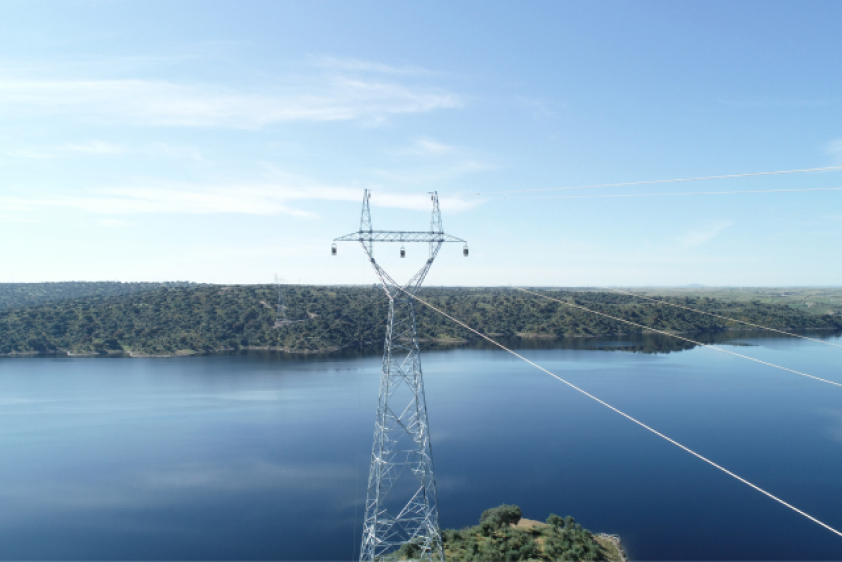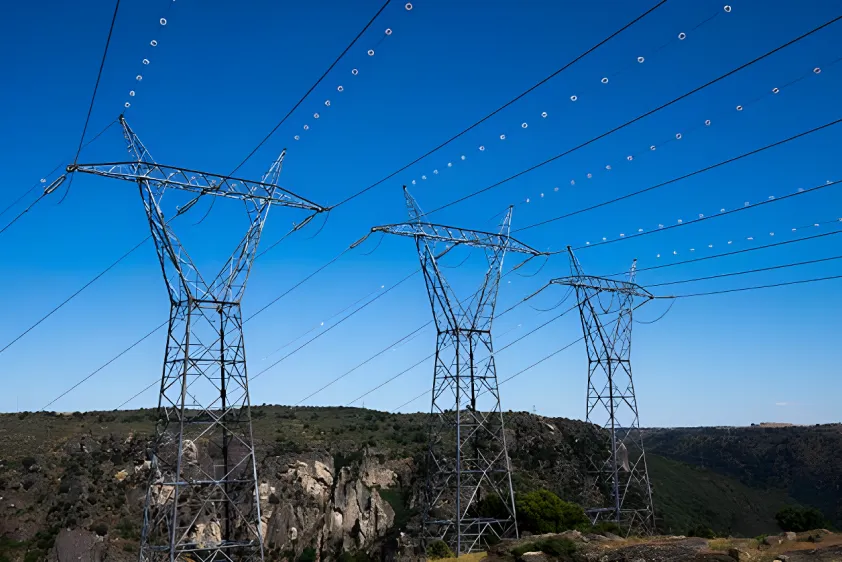SMART GRIDS IN SPAIN
Smart grids, the key to driving the digital transformation of the Spanish electricity distribution sector
At i-DE Redes Eléctricas Inteligentes, the distribution company of Iberdrola España, we continue to make progress in the transformation of electricity grids towards a smarter, more reliable and secure infrastructure. Electricity distribution in Spain is no stranger to digital transformation. Technological advances have made it possible to promote a distribution system in which bidirectionality, flexibility, digitalisation and automation make possible a new interconnected map that responds to the needs of users and energy producers and guarantees the incorporation of more renewable energies.

We are advancing in the transformation of electrical networks towards a more intelligent, reliable and secure infrastructure.
What are smart grids?
Smart grids are electricity grids capable of intelligently and dynamically integrating the actions of all users connected to them - those who generate energy, those who consume it or those who do both - in order to supply electricity efficiently, sustainably, economically and safely. It combines three elements: traditional electrical equipment, smart meters, and information and telecommunications systems that allow information to be received remotely. Using this advanced technology, it detects more quickly and accurately when a line suffers a fault, allowing it to be resolved in less time or even to anticipate overload situations.
Thus, the smart grid makes it possible to monitor and act remotely, instantaneously and automatically on the electricity grid and, thanks to this, to anticipate possible incidents, manage those that occur more quickly and, in short, improve the quality of the service received by the consumer. Similarly, the information provided by smart meters helps to understand the needs of customers with regard to everything related to their supply point, as it enables decisions to be made based on their detailed information.
By focusing our efforts on transforming grids into smart infrastructure, we not only respond to new trends and customer needs, but also advance the energy transition. Smart grids contribute to the decarbonisation and electrification of the economy by facilitating the integration of renewable energy, sustainable mobility and self-consumption.
Smart grids are supported by technological advances, basically thanks to three elements: traditional electrical equipment; electronic meters and information systems; and telecommunications that allow information to be received remotely. In addition, they cover the entire technological infrastructure, from energy generation and distribution to the storage and consumption of the energy generated.
i-DE Smart Grids: who is i-DE and what does i-DE do?
Through i-DE Redes Eléctricas Inteligentes, Iberdrola Spain's energy distributor, we take care of getting electricity to where you need it and maintaining distribution networks. We do this by responding to market trends and paying special attention to the needs of our customers. At Iberdrola España, we place the customer at the centre of our activity, allowing them to decide on their electricity consumption to promote the integration of renewable energies and electric mobility in their daily lives. In this way, we make them active agents in the decarbonisation of the economy and the energy transition.
Difference between distributor and marketer
As their name suggests, distributors are the companies responsible for distributing electricity services to homes and businesses, i.e., for delivering the electricity supply to customers by connecting them to the grid, installing the meter and checking that it is working correctly. It is the company responsible for laying the cables, installing the meter and responding in the event of a breakdown; in short, for managing the physical infrastructures so that the electricity can reach the home. Unlike the distributor, the distributor cannot be chosen. The entire geographical area of Spain is divided into distributors, and depending on where the supply point is located, one or another distributor is assigned.
On the other hand, the electricity retailer is the one that sells electricity to the end consumer and pays a toll to the distribution company for using its electricity network. The distributor is the entity that customers can contact directly for any billing-related issue, while the distributor is contacted to resolve doubts or questions related to the connection of new supplies, meter reading and quality of supply. It is up to the consumer to choose which supplier to contract.
Differences between a Distributor and a Retailer
Distributor
-
Who you call if your electricity goes out
-
Maintains the grid
-
Plans and carries out scheduled outages
-
Who owns the meter I have installed
-
You cannot choose it
Retailer
-
Who you call if you have doubts about your bill, tariff or contract
-
Buys and sells energy
-
Responsible person with whom the contracting is done
-
Who you contact to change the contracted tariff
-
You can choose it
Functions of a distributor
The main functions of a distribution company are to provide access and connection to the grid to supply energy and guarantee the quality of supply, carrying out preventive maintenance of the grid (of its lines, transformation centres, substations, etc.), and solving faults when they occur. In addition, the distributors are responsible for installing and programming the smart meters, as well as making them available to customers and marketers, so that they can bill customers and have all the information relating to electricity consumption and power.
i-DE's presence in Spain
At i-DE, we take care of supplying electricity wherever it is needed through the distribution networks, as well as carrying out its maintenance. Trust, innovation and proactivity are three values that mark our day-to-day work.
At i-DE we provide you with all the information you need to get the most out of your smart grid connection. You can check our outage map to find out if there are any incidents, work in progress or scheduled work on the network that affects you. We also keep you informed of our scheduled outages, i.e., the outages we carry out in the electricity supply in order to carry out maintenance and improvement work on the elements that make up the network.
Through i-DE, we have a customer base of more than 11 million customers and our electricity network extends across ten autonomous communities and 25 provinces, covering a territory of almost 270,000 km2.








